What is the difference between Padel Tennis and Pickleball
There are so many racquet or paddle sport games out there today that it can be difficult to tell which one is which! If you’ve never played one of these games before, it’s easy to become lost. Pickleball and Padel tennis are two examples of paddle-based sports.
You will inevitably compare Padel and Pickleball. While Pickleball is the fastest growing racket sport in the United States, Padel is growing globally. To what extent do these two sports overlap with one another? Padel vs. Pickleball: what’s the difference? Pickleball and Padel may have a superficial resemblance, but they have their origins in two entirely different sports. Padel coming from tennis whereas badminton is a closer ancestor of Pickleball.
These sports may appear similar, but they are quite different from one another. Once you grasp the differences one of these topics may pique your interest more than the other. So lets look at the differences between these two games.
Padel Tennis vs. Pickleball
Padel Tennis
Padel tennis, often known as pop tennis, is frequently played outside in an enclosed space to protect safety. However, like racquetball it can also be played indoors. Padel tennis is sometimes referred to as paddleball by some players.
As with tennis, you can play it in singles or doubles, which allows for simultaneous play by two or four individuals. Similar scoring to lawn tennis is used for winning games and winning the set is also similar. The National Paddleball Association also maintains a website with additional rules.
Pickleball
Pickleball was created in 1965 by three Washington state fathers. This sport uses smooth paddles made of wood or other materials. A plastic hole-filled ball is batted back and forth across a net. This game is enjoyed by many since it is simple to learn and play, even for children who are not ready for tennis. The game effortlessly adapts to any arrangement, from casual to complete tournaments.
How To Play
These two games appear identical, yet their structure and form differ greatly. Knowing the rules, how to play, and scoring for each game is required before you can start playing.
In truth, the two games are played on completely different courts.
In Padel, you can hit the ball after bouncing off the transparent glass walls, whereas Pickleball is played on an open court with no such option.
Both games are perfect for pairs of players. But it would help if you realized that padel rules require doubles on a normal padel court. However, there are a few dedicated padel singles courts, but most are doubles courts. In comparison, Pickleball allows you to play singles or doubles on the same court.
Pickleball has prohibited parts of the court; yes, there are areas on your side of the court that you are not supposed to step on unless under special rule exceptions. Not knowing this could cost you many points.
Despite superficial similarities, the two sports employ vastly distinct equipment.
The padel racket has a thicker, perforated face than the pickleball padel. This is explained in my essay what is a padel racket.
Padel balls are comparable to tennis balls but have less pressure and bounce lower. Most World Padel Tour tournaments use the Head Padel Pro ball. My recommended padel balls are listed here.
In Pickleball, you utilize a perforated plastic ball that moves much slower.
Both sports have lengthy rallies. The sluggish wiffleball in Pickleball and the surrounding walls in Padel keep the ball in play.
Pickleball is like standing on a large ping pong table, whereas Padel is like a short tennis court.
In both games, a net divides the court. Pickleball has lines on each courtside like badminton, while Padel has lines like service blocks on a tennis court.
Padel Tennis vs. Pickleball: Court Dimensions
Padel tennis court
This racquet sport has the following court features:
- Your court must have a minimum width of ten meters and a maximum of twenty meters.
- It is a rectangle with a net dividing it in half.
- There are service lines on both sides of the network.
- Two equal blocks are formed by dividing the net and service area in half with a line.
- The court’s perimeter is surrounded by a glass/cement wall and a wire mesh fence.
- Twenty centimetres wide are the painted service lines.
- In Padel, the service blocks indicate the ball’s location after it is served.
- Courts that are covered must have a minimum roof clearance of six meters.
- If you want to find more information about padel courts, I wrote an in-depth article that you can find here.
Paddle tennis objects and court.
Pickleball Court
While this sport has the following court features:
- The court measures 13.41 meters wide by 6.1 meters long and is divided in half by a net similar to that used in Padel.
- On both sides of the court, near the net, there is a no-volley zone (dubbed the kitchen) designated 2.13 meters from the net.
- Its court is identical to badminton, with a net height of 0.91 metres.
- A centreline separates the service area’s right and left halves.
- In Pickleball, service blocks indicate where the ball must bounce following a service.
Padel Tennis vs Pickleball: Rules
The rules of Padel and Pickleball differ significantly. The service is the easiest spot to compare the regulations.
You serve the ball by hitting it below your waist in both games. In Padel, you must bounce the ball before striking it, whereas in Pickleball, you must strike it flat, like the service in badminton.
In Pickleball, you can only serve once unless the ball clips the net on its way over, in which case you can serve again. In contrast, Padel has a first and second service, similar to tennis.
In Pickleball, both feet must be behind the baseline, and one foot must be on the court surface. Unlike Padel, where the baseline is a glass or cement wall. So the padel service is played between the baseline and the service block’s edge.
Both games play the serve diagonally, aiming for the clearly defined service block in the opponents’ court. Also, players serve from the right side of the court.
Padel Tennis vs Pickleball: Scoring
Padel is scored like tennis, with three sets and tie breaks. When deuce is called during a game, padel scoring differs from tennis. Unlike tennis, Padel uses the golden point to win the game. Here is the article I published about the golden point in Padel.
On the other hand, Pickleball has a scoring system based on badminton (its origin sport). The goal is to be the first individual or team to reach 11 points, with at least two points advantage over the other team.
In badminton, the first player/team to 21 points wins. In badminton, you can score a point while your opponent is serving, while in Pickleball, you can only score points while your opponent is serving. The serve and ability to start scoring points come to you if you win while your opponent is serving.
If the score is tied at 10, the game continues until one of the two players/teams has a 2-point lead.
Padel Tennis vs Pickleball: Playing Techniques
Because the whiffle ball moves more slowly in Pickleball, strategy is more crucial than power when playing the game.
Since the padel ball moves faster than the whiffle ball, the outcome of a point is more dependent on a player’s technical talent.
Padel Tennis vs Pickleball: Relative Fitness Demands
A pickleball court is 16.5 percent smaller than that of a padel court. However, don’t be misled; the game’s rallies are extremely protracted due to a slow-moving perforated plastic ball and a small court. As long as you don’t get tangled up with your playing partner, you’ll be in constant motion.
While in Padel, despite having a wider court, the rebounding ball off the wall keeps the ball in play for longer, lengthening the length of the rallies. So, for different reasons, the jury is still out on which of the two is more stressful on your fitness.
Padel Tennis vs. Pickleball: Four Walls
One unique thing about Padel is that you can play inside the four walls of a court. It doesn’t matter how bad you hit your shot. The ball can come back off the wall and give us a second chance to hit it since you are playing in an enclosed court.
The more you play, the easier it will be to learn how to use the walls in your shots. This is not something that can happen on a pickleball court.
Padel Tennis vs. Pickleball: Speed And Agility
Playing Pickleball revolves around a constant volley. This requires you to be completely focused on the ball and on your opponent’s moves at the same time. To try and get your opponent into the “non-volley zone,” you should use team tactics, and speed and agility.
Padel Tennis vs. Pickleball: Singles or Doubles
Playing a sport depends on a person’s preference. Sometimes, people prefer lawn tennis over Pickleball or pickleball over padel tennis. However, playing a game in both singles and doubles also plays a part. Because you can play singles or doubles with Pickleball, it has become a lot more popular than it used to be.
In Padel, the general rule is that you play doubles, except for a few singles courts that I have seen in some parts of France. Playing games inside four walls makes Padel a game that everyone can play together.
It is up to you what you like. If you only want to play one-on-one, Pickleball is your best bet.
Padel Tennis vs. Pickleball: Level Of Technical Difficulty
Both sports have their technological challenges. What I said about Padel applies to Pickleball. These sports are simple to learn yet tough to master. For example, both courts are small, making coverage easier. Both games require a lightweight racquet with a short handle, which helps new players control the ball. Pickleball and Padel may not be the same, but both are enjoyable and beneficial to your health.
If you can learn both, do so. No pickleball where I live, but I’ve played Padel with pickleball players who picked up the basics quickly. I don’t see why it wouldn’t work in reverse.

Hi there! My name is James Carter (Jimbob to my opponents) and I’m a passionate padel tennis enthusiast. Welcome to my site, Padel Tennis Hub.
My love for padel tennis began in 2015 after playing for the first time in Murcia, Spain. Since then, I have been hooked on this exciting sport and have dedicated myself to learning as much as I can about it.
Through my website, I aim to share my knowledge and experience of padel tennis with fellow enthusiasts. Whether you’re a seasoned player or just starting out, I hope to provide useful information, tips, and tricks that will help you improve your game and enjoy this amazing sport to the fullest.
